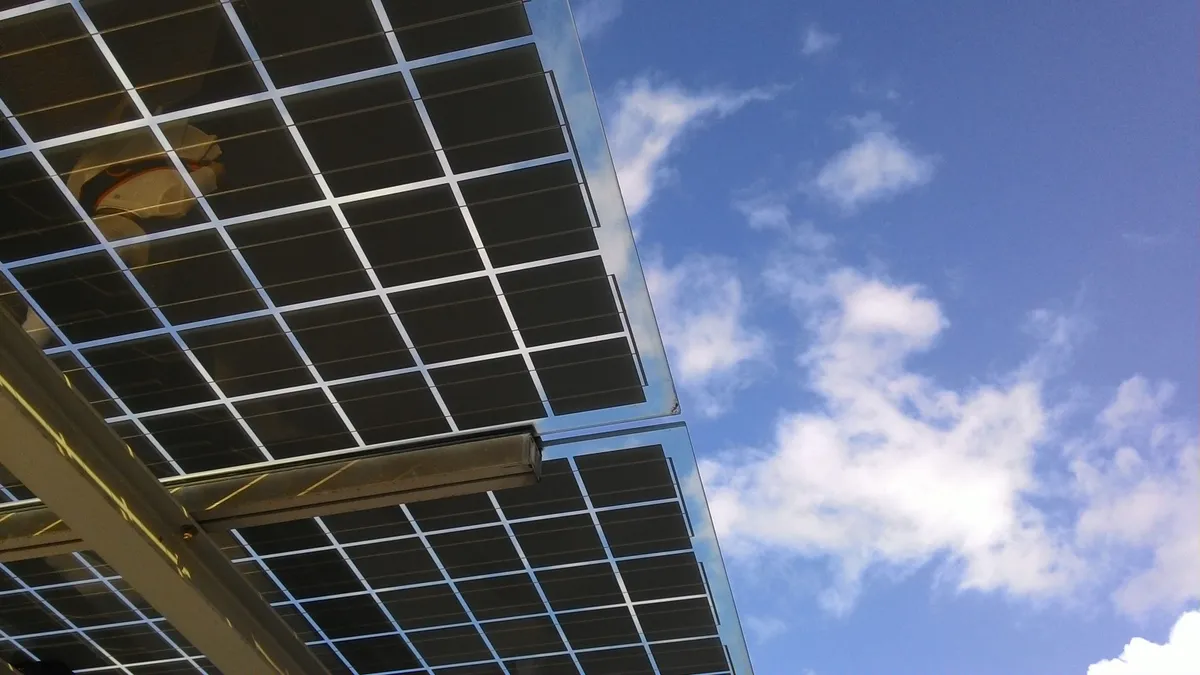Dive Brief:
-
Wind and solar will represent more than two-thirds of new electric generating capacity to come online in 2021, while battery storage capacity is set to quadruple over the next year, according to the U.S. Energy Information Administration (EIA).
-
Two-thirds of new solar projects are now built in tandem with energy storage, according to Sam Newell, a principal analyst for The Brattle Group.
-
At current pace, wind, solar and storage could overtake conventional technologies as the leading source of generation by the early 2030s, according to Wood Mackenzie principal analyst Robert Whaley.
Dive Insight:
Renewable energy is still a ways from becoming the dominant source of energy on the U.S. electric grid, but wind and solar will remain the resources of choice for new development in 2021.
According to EIA, the U.S. is set to bring 39.7 GW of new capacity online by the end of 2021. Natural gas generation will represent just over 16% of this new capacity, according to EIA, with 6.6 GW scheduled to come online this year. Wind generation is expected to grow 12.2 GW — down from 21 GW in 2020.
Solar, meanwhile, will enjoy another record-breaking year, with 15.4 GW in new capacity expected to come online in 2021. The U.S. is also expected to add 4.3 GW of battery storage, more than quadrupling existing capacity, according to EIA.
The growth of solar, Newell said, is in many ways bringing the storage sector along with it. While there are standalone battery projects, he said, the industry has made a rapid pivot to solar-plus-storage as the preferred format, with two-thirds of solar projects already coupled with batteries. Wind is paired with storage much less frequently, he said.
The 2021 trends identified by EIA have been in the works for some time — renewable energy deployment has outnumbered new conventional development since roughly 2015. But Newell the speed with which renewable energy has overtaken conventional generation assets has far exceeded expectations.
"This has been going on for several years," he said, and while wind is expected to see a decline this year, renewable energy resources overall continue to grow. "They're blowing past what we once thought would be the saturation point for such intermittent resources."
Newell attributed this explosive growth to rapid declines in the cost of renewable energy — declines far outpacing improvements seen in conventional technologies, and even some of the most optimistic estimates for how quickly renewable energy would become affordable. But policy also played a role, he said, and the regions which have seen the most rapid deployment of renewable energy are also those that set early, ambitious goals for renewable energy.
The incoming Biden administration, Newell said, could prompt even greater renewable energy deployment if lawmakers implement measures such as a national carbon policy or renewable energy standard.
"That would bring in some of the states where it's not much cheaper to do the renewables, and that don't have the environmental mandates," he said.
Even without any change in policy, Whaley said, the current rate of renewable energy deployment will see wind and solar overtaking fossil fuels as the source of the majority of U.S. energy by the early 2030s. Wood Mackenzie expects the renewable sector will continue to enjoy incremental growth through roughly the same time period, with growth beginning to stabilize around 2033.
"Certainly all the momentum is for renewables, and they're dominating additions," he said, "but it's still going to take a while for solar and wind to overtake gas."













